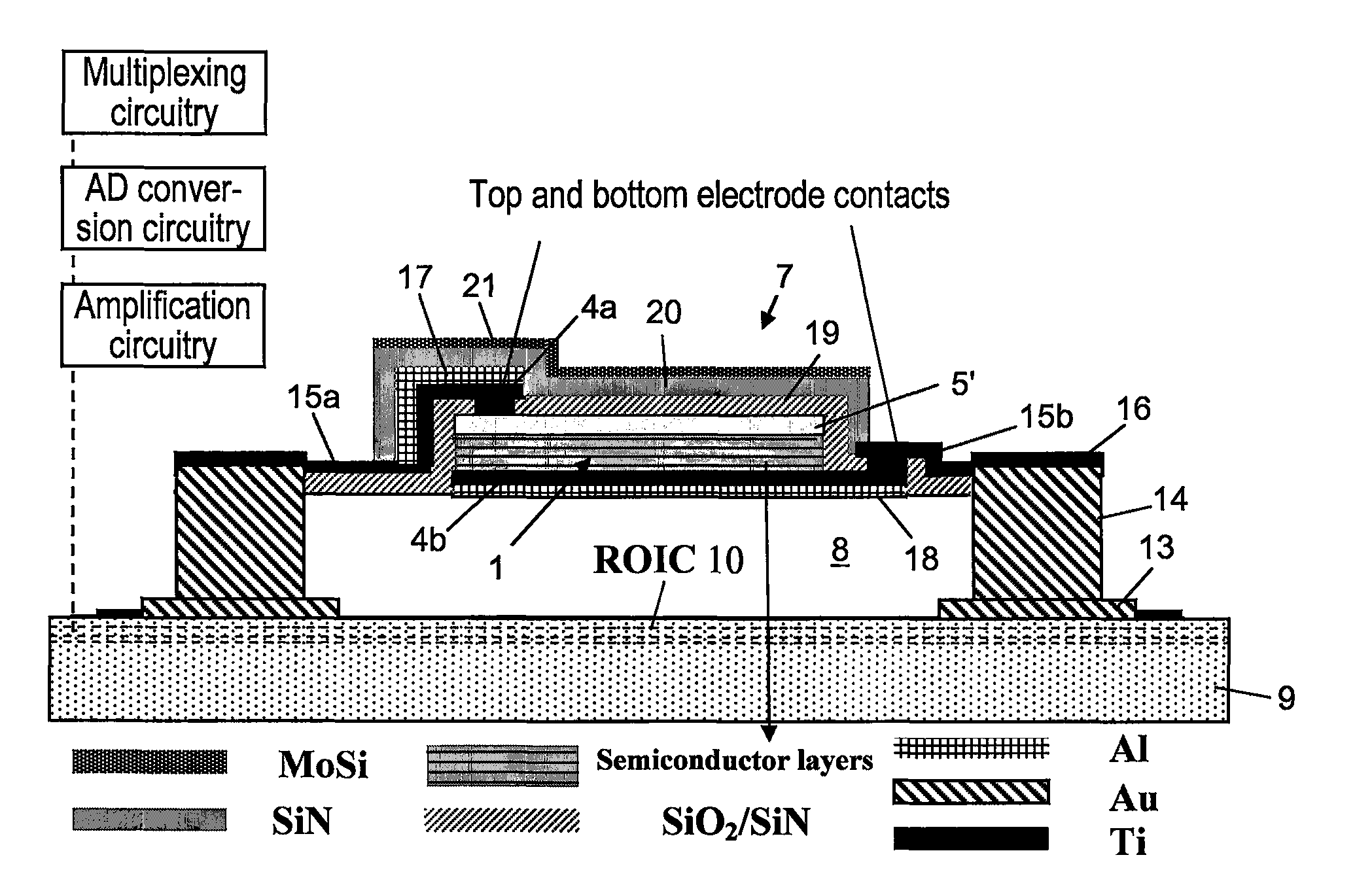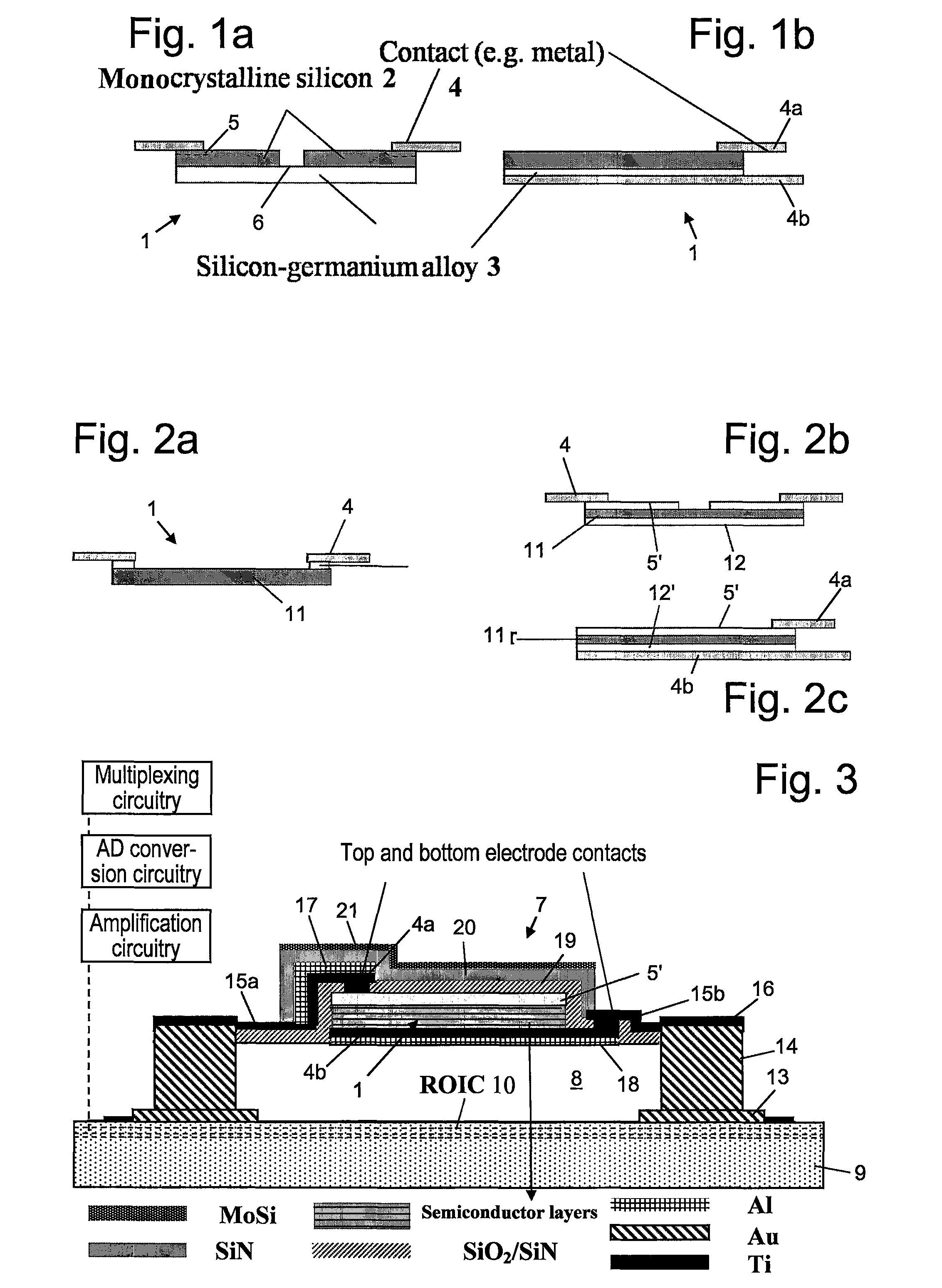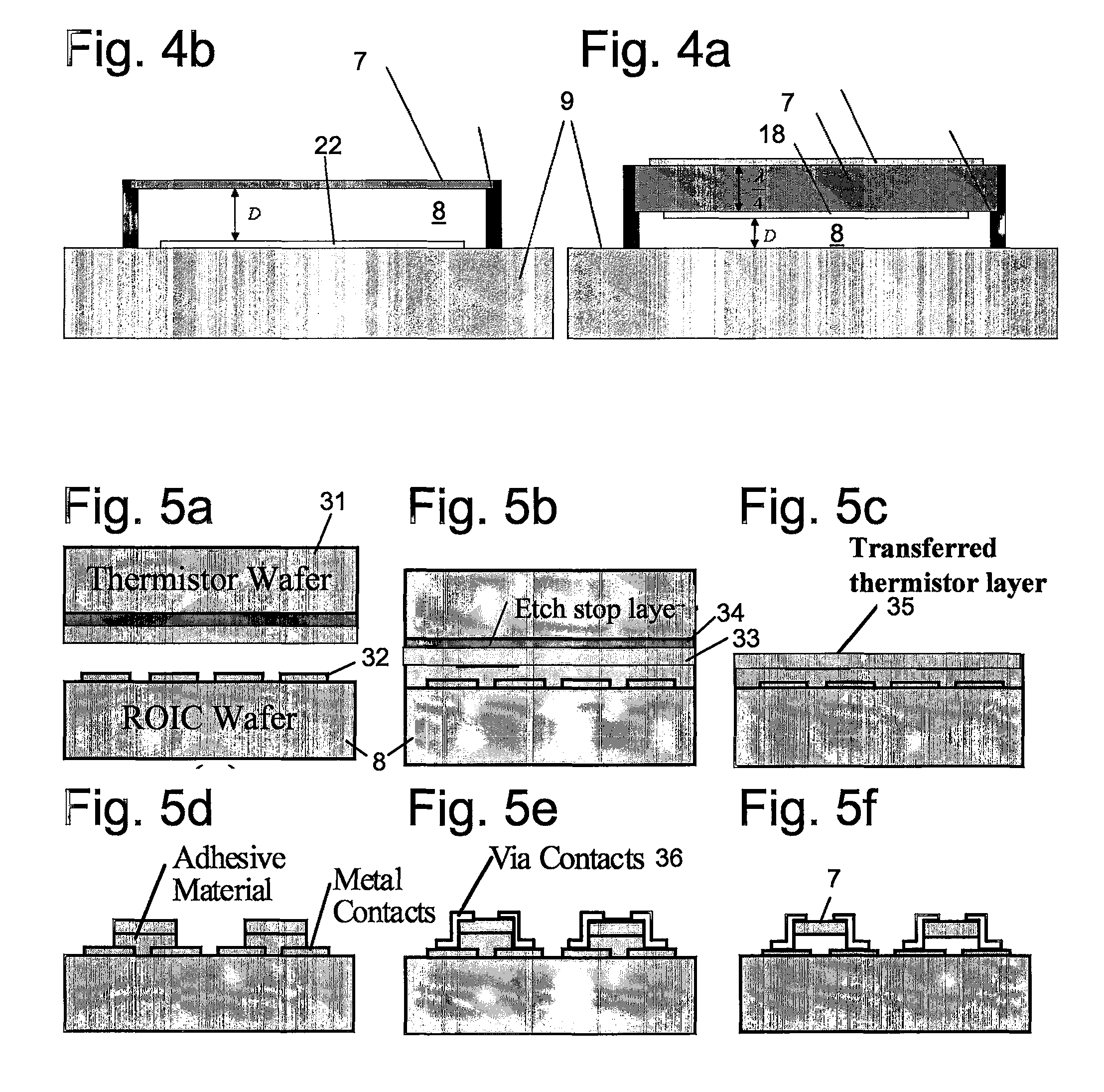Microbolometer Semiconductor Material
a semiconductor material and microbolometer technology, applied in the field of infrared bolometer sensor material, can solve the problems of high noise characteristics, low sensitivity of components comprising such pn junctions, and inability to deposited monocrystalline and/or epitaxially deposited materials requiring high deposition temperatures on top of integrated circuits, etc., to achieve the effect of improving sensitivity and reducing nois
- Summary
- Abstract
- Description
- Claims
- Application Information
AI Technical Summary
Benefits of technology
Problems solved by technology
Method used
Image
Examples
first embodiment
[0027]In a first embodiment, a bolometer based on semiconductor materials comprises as a resistance element 1 two layers, see FIGS. 1a and 1b, one silicon layer 2 and one silicon-germanium alloy layer 3, the layer having thermodynamically stable or at least meta-stable thicknesses and also the germanium concentration being thermodynamically stable Typical thicknesses are in the range of 10-100 nm and the atomic concentration of Ge is typically less than 40% and can even be less than e.g. 30%. The silicon-germanium layer 3 can be strained or unstrained. The silicon-germanium layer 3 is not intended to provide any quantum mechanical carrier confinement, known in the art as a quantum well (QW) or any alteration of the electronic band structure, other than strain-induced effects on e.g. the mobility and a band gap change, as generally expected for a given germanium concentration.
[0028]The concentration of the components of the silicon-germanium alloy in layer 3 can be constant in the la...
second embodiment
[0041]In a second embodiment, the resistor element 1 of a bolometer can comprise a single layer 11 of mono-crystalline silicon or of a silicon-germanium alloy as a temperature sensitive thermistor material, see FIGS. 2a, 2b and 2c. The silicon-germanium alloy can have the same composition as described above, i.e. containing less than 30 atomic % of Ge. The single layer 11 can be doped with one or more impurity dopants, the doping levels selected so that the layer retains the basic crystallographic properties of silicon, i.e. so that is not transformed to a poly-crystalline or amorphous state. The impurity dopants can be selected from the elements in groups III, N and V of the periodic table and in particular among boron, aluminium, indium, arsenic, phosphorous, antimony, germanium, carbon and tin. Typical doping levels are in the range from 1·1014 cm−3 until the level of solid solubility 1·1020 cm−3. The thermistor material may contain highly doped, e.g. p++, layers as electrical co...
PUM
 Login to View More
Login to View More Abstract
Description
Claims
Application Information
 Login to View More
Login to View More - R&D
- Intellectual Property
- Life Sciences
- Materials
- Tech Scout
- Unparalleled Data Quality
- Higher Quality Content
- 60% Fewer Hallucinations
Browse by: Latest US Patents, China's latest patents, Technical Efficacy Thesaurus, Application Domain, Technology Topic, Popular Technical Reports.
© 2025 PatSnap. All rights reserved.Legal|Privacy policy|Modern Slavery Act Transparency Statement|Sitemap|About US| Contact US: help@patsnap.com



